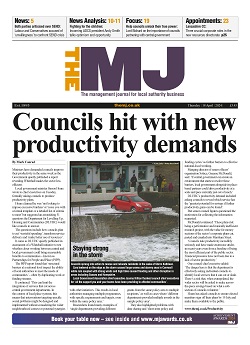Jonathan Swain looks at how role models can increase the diversity of your organisation
Media focus on workplace diversity is slowly but surely inspiring managers across all sectors to make a change in their organisations. Unconscious bias may still be a persistent challenge, but most managers in local and devolved government now recognise the importance of fresh perspectives in driving innovation, achieving organisational ambitions and developing a positive employer brand
Yet, while the advantages of a diverse workforce are well-known, a sizeable hurdle still stands in the way.
The further up the hierarchy you look, even in local authorities, the fewer diverse role models you will find. Just a year ago, only 33% of female councillors were chief executives, despite them making up 78% of council employees. Ethnic diversity has a long way to go, too, with issues like sexuality and socio-economic backgrounds chronically under-represented.
The importance of role models
As we embark on our professional careers, we rely on role models for inspiration, guidance and reassurance that we aren’t alone; we look to leaders who reflect us in some way or another to provide proof we too can achieve our dreams. By observing successful role models, we grow confident in our ability to rise to the top despite any potential barriers that may stand in the way.
In an era characterised by constant change, the need for diverse input into the decisions of any organisation is essential. In order to take advantage of the opportunities that lie ahead, we must not restrict ourselves to the perspective of one demographic. Without mentors to shine a light in the darkness and provide inspiration, motivation and advice, employees from minority groups struggle to have their voices heard.
While role models and mentors don’t necessarily have to mirror all the qualities of the mentee, it’s understandably much easier for an employee to draw influence from someone they can directly relate to; someone who has been forced to overcome the same hurdles they will in their professional journeys.
Challenging the current leadership landscape
Data published in September by the Financial Reporting Council in partnership with Exeter Business School reveals that only 15 companies in the FTSE 100 Index of biggest listed businesses fully comply with the rules about reporting on their diversity policies and initiatives, and if this is the example the biggest commercial organisations are setting, then we know they too have some work to do.
If a leadership team is too homogenous, recruiting candidates from diverse backgrounds into lower level roles in local authorities will be a sticking plaster, rather than a solution to increasing diversity. Individuals within an organisation need to feel like reaching higher levels is an achievable goal, but it’s difficult when they see no evidence to suggest it’s possible.
Therefore, if leaders are truly committed to increasing diversity and fostering an inclusive culture that promotes equal opportunities, they must reconsider the composition of the management team.
Increasing diversity at management level
Boosting top level diversity is by no means a task that can be tackled overnight, so councils and devolved bodies must put in place mechanisms early on to identify, nurture and promote people of minority groups from within to create a balanced leadership pipeline. Further to this, existing leaders should take the time to mentor those who have not benefited from an abundance of role models to encourage them to aim higher and take on more responsibility.
As well as revising promotion strategies and supporting a diverse pipeline from within, leaders should look to the wider talent pool when seeking skilled executives to join the management team. While this shouldn’t be treated as a quick fix solution, the benefits of a diverse team are numerous, with leadership teams of this nature consistently outperforming their homogenous counterparts.
This isn’t to say that ‘trickle down diversity’ is sufficient in itself, of course. Nevertheless, talent retention is drastically improved when individuals have role models they can relate to in senior roles within a local authority. It may not seem like much, but a well-balanced management team can make all the difference.
Jonathan Swain is managing director at Audeliss



